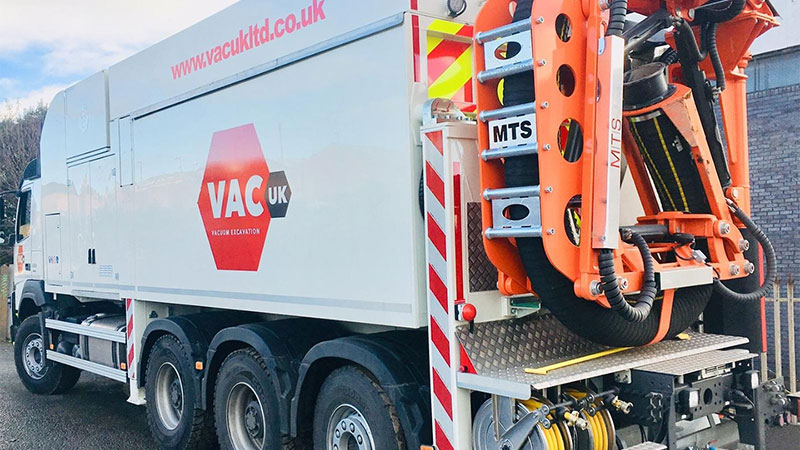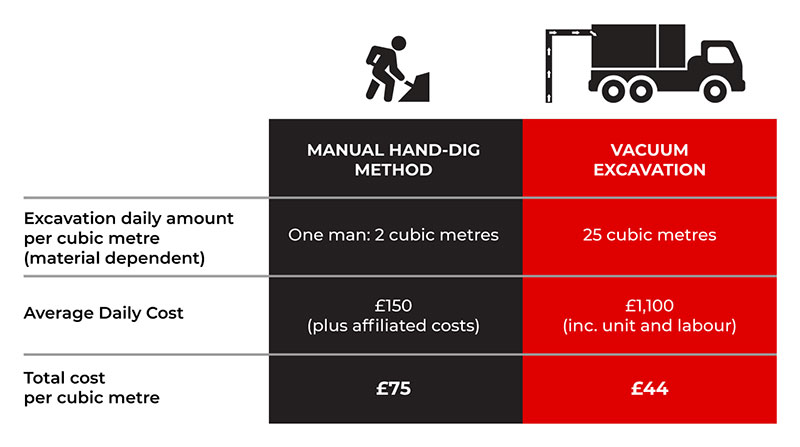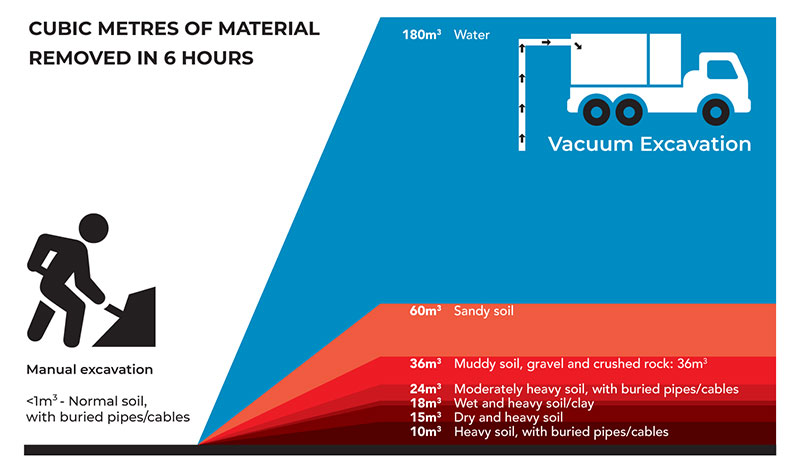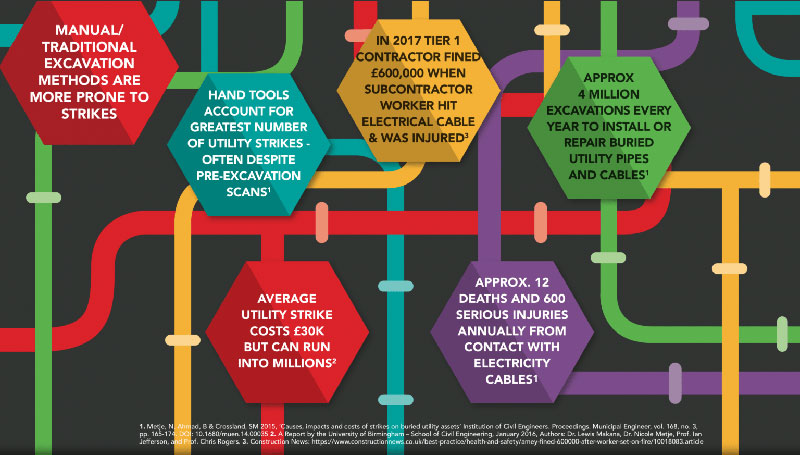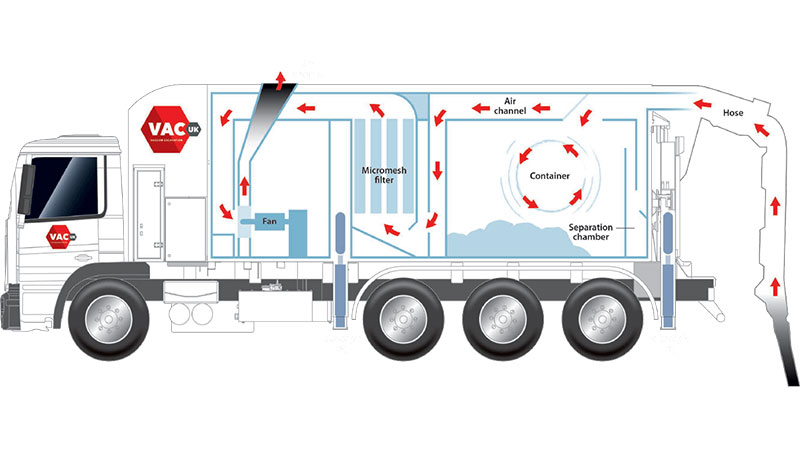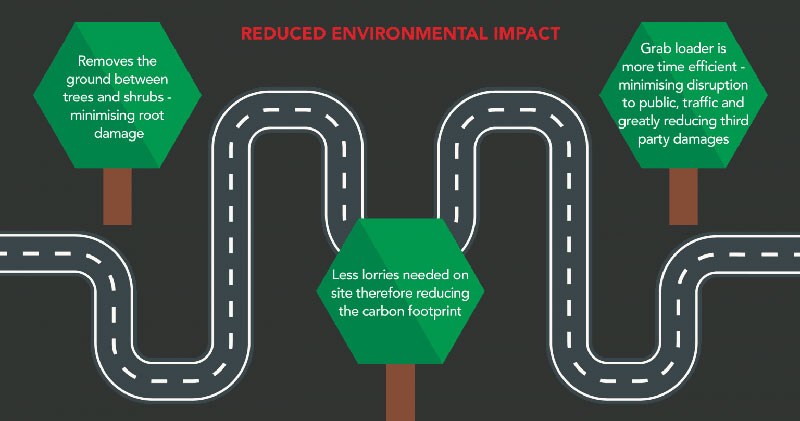Address
Tyttenhanger House
St Albans
AL4 0PF
About VAC UK Ltd
Vacuum Excavator Hire
Vacuum excavation is a safer, more environmentally friendly and cost-efficient method of excavating.
A vacuum excavator is a construction vehicle that removes heavy debris and material from a hole in the ground in urban and suburban areas. Fast excavation is guaranteed without the risk of affecting or damaging any unforeseen utilities.
Where Can It Be Used?
Vacuum excavation virtually eliminates the risk of damaging underground utilities, while mechanical digging with hand tools or backhoes could potentially cause damage to those utilities.
Vacuum excavation is much less invasive than traditional methods of hand-digging. It also offers a lower cost with a higher level of precision with less surface restoration needed afterward.
Complete Jobs Faster
Vacuum excavation is much faster than other excavation methods, especially manual digging, and can be essential for reducing disruption to homes, businesses, and services, especially within urban areas.
The amount of material removed during the excavation of a site can depend largely on the material being excavated. Whether it’s sandy soil or much heavier soil with buried pipes or cables, it’s still the preferred choice and much faster than traditional manual methods.
How Does Vacuum Excavation Work?
Vacuum excavation firstly uses a high-power blast of air directed into the site in order to loosen soil and break up any large materials. An air vacuum hose is then passed into the site and used to suck up the loosened materials out of the hole and into a specially designed tank, ready to be transported elsewhere or saved for refilling the site later.
Why Choose Vacuum Excavation?
Vacuum excavation is the safest method of digging around live utilities, as it allows you to remove the earth from around existing pipes and cables without damaging the underground utilities and causing any unnecessary health and safety or environmental incidents.
The use of suction excavators is up to 16 times more effective than conventional excavation methods and replaces the time and cost-intensive work done by hand in different sectors.
Suction excavators are safe, very fast on-site, ready for immediate use, operate in an environmentally harmless way, offer a high level of industrial safety, require little space and suck through small openings.
Vacuum excavation is a safer, more environmentally friendly and cost-efficient method of excavating.
A vacuum excavator is a construction vehicle that removes heavy debris and material from a hole in the ground in urban and suburban areas. Fast excavation is guaranteed without the risk of affecting or damaging any unforeseen utilities.
Where Can It Be Used?
- Tunnel building
- Installing trenches & pipeline
- Install new utilities & work around old ones below ground
- Waste transfer & disposal
- Building renovation
- Tree root renovation
- Emergency services
- Disasters
Vacuum excavation virtually eliminates the risk of damaging underground utilities, while mechanical digging with hand tools or backhoes could potentially cause damage to those utilities.
Vacuum excavation is much less invasive than traditional methods of hand-digging. It also offers a lower cost with a higher level of precision with less surface restoration needed afterward.
Complete Jobs Faster
Vacuum excavation is much faster than other excavation methods, especially manual digging, and can be essential for reducing disruption to homes, businesses, and services, especially within urban areas.
The amount of material removed during the excavation of a site can depend largely on the material being excavated. Whether it’s sandy soil or much heavier soil with buried pipes or cables, it’s still the preferred choice and much faster than traditional manual methods.
How Does Vacuum Excavation Work?
Vacuum excavation firstly uses a high-power blast of air directed into the site in order to loosen soil and break up any large materials. An air vacuum hose is then passed into the site and used to suck up the loosened materials out of the hole and into a specially designed tank, ready to be transported elsewhere or saved for refilling the site later.
Why Choose Vacuum Excavation?
- Manual/traditional excavation methods are more prone to strikes
- Hand tools account for the greatest number of utility strikes – despite pre-excavation scans
- In 2017 a contractor was fined £600k when subcontractor hit electrical cable and was injured
- Approx 4 million excavations every year to install or repair buried utility pipes and cables
- Average utility strike costs £30k but can run into millions
- Approx. 12 deaths and 600 serious injuries annually from contact with electricity cables
- Maximises operative safety by minimising manual handling
- Extension tube made from p.e. pipe to reduce utility damage
- Extension tube insulates vehicle and workforce when working in high-risk areas
- Hydraulic power arms to increase maneuverability & reduce manual handling
- Over 60% reduction of utility damage compared to traditional methods
- Superior efficiency to manual work
- Reduces staff workload
- Easy to collect and remove solid and liquid substances
- Greatly reduces construction time
- Ready to operate immediately
- Excavate in a third less space than a mini-digger
- Cleaner more compact sites, therefore less disruption and waste
- Stand-alone machine operation
- Combine with soil-engineering equipment impact moles keyhole liquid soil
- Multiple uses
Vacuum excavation is the safest method of digging around live utilities, as it allows you to remove the earth from around existing pipes and cables without damaging the underground utilities and causing any unnecessary health and safety or environmental incidents.
The use of suction excavators is up to 16 times more effective than conventional excavation methods and replaces the time and cost-intensive work done by hand in different sectors.
Suction excavators are safe, very fast on-site, ready for immediate use, operate in an environmentally harmless way, offer a high level of industrial safety, require little space and suck through small openings.
 UK
UK Ireland
Ireland Scotland
Scotland London
London


